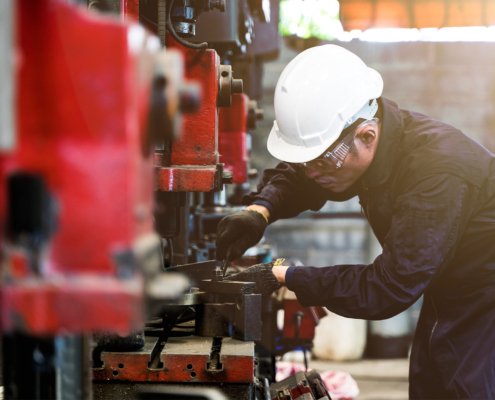 https://www.sbmech.com/wp-content/uploads/2024/09/Group-of-factory-job-workers-using-machine-equipment-in-manufacturing-workshop.jpg
1250
2000
Abstrakt Marketing
/wp-content/uploads/2023/10/cropped-Smith-Boughan_Logo-Formated-Lima-13-1030x269.jpg
Abstrakt Marketing2024-09-24 09:08:182024-11-19 11:07:52Understanding Control in Industrial Maintenance
https://www.sbmech.com/wp-content/uploads/2024/09/Group-of-factory-job-workers-using-machine-equipment-in-manufacturing-workshop.jpg
1250
2000
Abstrakt Marketing
/wp-content/uploads/2023/10/cropped-Smith-Boughan_Logo-Formated-Lima-13-1030x269.jpg
Abstrakt Marketing2024-09-24 09:08:182024-11-19 11:07:52Understanding Control in Industrial MaintenanceFor commercial buildings, the issue of deferred maintenance generates significant implications both from an operational and financial perspective. When building maintenance is put off, it can lead to many problems, including health and safety risks, steep repair costs, and a decline in property value. In this detailed guide, we will delve into the world of deferred maintenance: its concept, occurrence, signs, negative impacts, and financial aspects.
What Is Deferred Maintenance?
Deferred maintenance refers to the practice of postponing maintenance activities on buildings or equipment, either due to budget constraints or prioritization of other tasks. In the realm of commercial real estate, this decision can lead to prolonged deterioration and increased costs down the line. Deferred maintenance is not merely about delaying minor repairs; it signifies a strategic decision that impacts the asset’s long-term value and operational efficiency.
At the heart of deferred maintenance lies the challenge of balancing the maintenance budget against immediate operational needs. Many maintenance managers opt to defer maintenance tasks to save on what appears to be upfront costs, not fully recognizing the financial implications of such decisions. This approach often results from a lack of a comprehensive asset management plan.
How Deferred Maintenance Occurs in Commercial Buildings
Deferred maintenance in commercial buildings typically arises from several factors:
- Budget Constraints – Maintenance budgets often face cuts, leading to a maintenance backlog.
- Prioritization Issues – Maintenance managers might prioritize urgent work orders over preventive maintenance tasks, inadvertently leading to unplanned maintenance needs.
- Operational Demands – The pressing needs of daily operations can lead to maintenance tasks being postponed, underestimating the importance of maintenance management in ensuring operational efficiency.
These factors create a deferred maintenance workflow that accumulates maintenance work, eventually overwhelming the maintenance team. Connected CMMS (Computerized Maintenance Management System) solutions and FM (Facility Management) services can provide the visibility needed to manage these challenges effectively, prioritizing maintenance activities according to their impact on the business.
What Are the Signs of Deferred Maintenance
Recognizing the symptoms of deferred maintenance in commercial buildings is crucial for timely intervention. Key signs include:
- Visible Deterioration – This is the most apparent sign where the physical condition of the building or equipment visibly worsens.
- Safety Hazards – Deferred maintenance often leads to safety issues, such as faulty wiring or unstable structures, posing risks to occupants.
- Inefficient Operations – Equipment failures and system inefficiencies, such as problems with HVAC systems or connected refrigeration units, may indicate a maintenance backlog.
Smith-Boughan understands that deferred maintenance impacts businesses across any market. That’s why we work with companies in various industries. Explore who we serve today.
The Negative Impact of Deferred Maintenance
Deterioration of Buildings and Structures
The most immediate consequence of deferred maintenance is the deterioration of buildings and structures. Over time, minor issues can evolve into significant damage, negatively impacting commercial properties’ aesthetic and structural integrity. Such deterioration increases the cost of eventual repairs and diminishes the property’s value, making it less attractive to prospective tenants or buyers.
Safety Risks and Legal Implications
Deferred maintenance extends beyond financial implications to encompass safety and legal concerns. Maintenance issues that are not addressed promptly can turn into safety hazards, endangering building occupants and visitors. For example, neglecting necessary repairs to building infrastructure can lead to accidents or health issues, for which the property owner would be legally accountable.
The legal implications of deferring maintenance tasks are significant; property owners may face lawsuits, fines, and damage to their reputation. Professional property management companies, understanding the gravity of these implications, stress the importance of maintaining compliance with safety and building regulations to avoid such risks.
Negative Effects on Building Occupants
Beyond the physical and legal consequences, deferred maintenance also adversely affects the well-being and productivity of building occupants. An unmaintained environment can lead to discomfort, dissatisfaction, and even health issues among the occupants. For instance, failure to maintain indoor air quality systems can result in poor air conditions, contributing to respiratory problems and decreased occupant satisfaction.
Financial Aspects of Deferred Maintenance
Deferred maintenance—prioritizing certain maintenance tasks over others due to budget constraints or other factors—can lead to significant financial implications for commercial real estate owners and managers. While it may seem like a viable short-term solution to cash flow issues, the long-term financial impacts can be far more significant than anticipated. The financial burden of deferred maintenance can accumulate rapidly from increased operating costs to unforeseen emergency repairs.
Deferred maintenance doesn’t just impact the immediate maintenance budget. It can lead to an increased cost in several ways. For one, maintenance issues that are not addressed in a timely manner often become more complex and expensive to resolve. Moreover, equipment failure resulting from inadequate maintenance can cause operations to halt, leading to lost revenue.
Consequently, the management of work orders and maintenance tasks becomes more challenging, with a maintenance backlog creating a cycle of unplanned maintenance that further strains the maintenance budget. As a result, the maintenance team may find it increasingly difficult to keep up with the maintenance workload, compromising the operational efficiency of the property.
Transitioning to proactive maintenance management can mitigate these risks. By implementing a maintenance strategy that prioritizes preventive maintenance and the timely resolution of work orders, property managers can reduce the long-term financial burden of deferred maintenance. Such strategies not only help in maintaining a balanced maintenance budget but also contribute to the overall asset management plan, keeping the commercial property in optimal condition.
Immediate and Long-Term Cost Implications
The immediate cost implications of deferring maintenance are often visible in the form of increased operational expenses. For instance, equipment like connected refrigeration, if not properly maintained, can consume more energy than necessary, leading to inflated utility bills. Over time, the cumulative effect of these small inefficiencies can reflect significantly on the balance sheet.
In the long-term, the costs associated with deferred maintenance escalate further. Equipment and structures that have not been properly maintained are more likely to require major repairs or replacements sooner than anticipated. Case studies from industries show that unplanned maintenance can cost several times more than regular preventive maintenance.
The concept of “pay now or pay more later” is particularly applicable to deferred maintenance. Investing in preventive maintenance helps avoid the need for more expensive corrective measures down the line. An effective asset management plan that incorporates a proactive maintenance strategy can significantly reduce both immediate and long-term financial implications.
Impact on Property Value
Deferred maintenance doesn’t only affect operational efficiency and maintenance costs; it also has a significant negative impact on the value of the commercial real estate. Properties that are not properly maintained tend to depreciate in value faster than those that receive regular, proactive maintenance.
Prevent Deferred Maintenance With Smith-Boughan Mechanical
Deferred maintenance may have some temporary financial benefits to it, but the long-term consequences significantly outweigh them. As a leading mechanical service provider, Smith-Boughan offers comprehensive maintenance solutions that safeguard HVAC and plumbing equipment for our clients.
We offer comprehensive maintenance plans that protect your investment and ensure your equipment is operating at peak condition. Our experts have experience working on HVAC and plumbing equipment from leading vendors, including:
- Carrier
- Trane
- York
- HydroTherm
- And More
Contact us today to learn more about our comprehensive commercial building maintenance solutions.
Share This Post
More Like This
 https://www.sbmech.com/wp-content/uploads/2024/09/Group-of-factory-job-workers-using-machine-equipment-in-manufacturing-workshop.jpg
1250
2000
Abstrakt Marketing
/wp-content/uploads/2023/10/cropped-Smith-Boughan_Logo-Formated-Lima-13-1030x269.jpg
Abstrakt Marketing2024-09-24 09:08:182024-11-19 11:07:52Understanding Control in Industrial Maintenance
https://www.sbmech.com/wp-content/uploads/2024/09/Group-of-factory-job-workers-using-machine-equipment-in-manufacturing-workshop.jpg
1250
2000
Abstrakt Marketing
/wp-content/uploads/2023/10/cropped-Smith-Boughan_Logo-Formated-Lima-13-1030x269.jpg
Abstrakt Marketing2024-09-24 09:08:182024-11-19 11:07:52Understanding Control in Industrial Maintenance
How to Develop a Quality Control Plan for Industrial Maintenance
Industrial Services (Quality Control), Maintenance
Understanding Industrial Maintenance Compliance Guidelines
Industrial Services (Maintenance), Maintenance
The Role of Technology in Industrial Maintenance Practice Innovations
Industrial Services (Maintenance), Maintenance
Factors to Consider When Choosing an Industrial Maintenance Provider
Industrial Services (Maintenance), Maintenance
Best Practices for Improving Industrial Maintenance
Industrial Services (Maintenance), Maintenance
Exploring the Benefits of Routine Industrial Maintenance
Building Services (Maintenance Agreements), Maintenance
Your Guide to Industrial Maintenance
Building Services (Maintenance Agreements), Maintenance
The Importance of a Commercial HVAC Maintenance Agreement
MaintenanceAbout Us
Smith-Boughan Mechanical has been servicing the Lima, Ohio, region with industry-leading mechanical design, fabrication, construction, and maintenance services since 1927.



